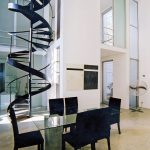-
H2O In Architecture: A Soothing Element
January 2011
Nothing in this world is softer and more yielding than water. As fragile as it may look over time in masses it wears down the hard. Its strength in masses is such that no one can overcome it; many can conquer it. No living organism on earth would subsist without it. Our existence is sustained because of it.
By Vinuri Ethapane | Photo credit: Suchirana Senanayake
Water – the most commonly known substance on earth, is with us every moment of our lives from the point of inception to our demise. But do we know the secrets of this remarkable element.

In the Holy Scripture water is more than merely a physical constituent, it is a certain concept linked with the idea of giving life. The link between this holy concept and science exists. For example, it has been proven that water in pores and capillaries is capable of creating enormous levels of pressure; in a seed water reaches 400 atmospheres of pressure in the moment of germination. It is that pressure which enables the plant shoot
to break through the soil with such ease and join the living.

Besides needing water for our survival we find ourselves seeking it for other purposes. On a general scale humans like to live close to water. Land is surrounded by huge expanses of water.

Water elements makes Parque de Catalunya an attractive sport for local residence, Source - Wasser Water

A lawn at the middle boating lake is very popular with sunbathers. The close proximity of peace and activity and urban, landscape, Source - Wasser Water
Cities are built bordering water. Man creates great lakes and beach, river and lake front living has fast become the trend of the present. Is this because we are afraid to venture away from it? The answer to this is that water as much as it balances the systems within us also soothes our minds. Water seems to have a powerful calming effect.
As the world becomes more human dominant and countries and cities get planned town planners and urban designers create cities with water sources primarily in mind. As rivers and canals are no longer being used for sewage disposal, river bank designs and canal developments have become one of the top priorities among urban development projects. On a micro level, architects, landscape architects and engineers adopt technically and aesthetically pleasing concepts for detailing and planning out the individual buildings with the use of water elements within their designs to achieve numerous experiences to a single individual space.

A pathway that links the lakeside promenade with the rest of the park leads behind a waterfall, Source - Wasser Water
In urban design projects, the developments of parks have become a crucial element in controlling urbanisation. Extensive parks are needed to ensure that cities do not get over built. Industrialisation in many countries did not leave space for the much needed urban parks. Parque de Catalunya, Sabadell is the result of a long struggle by the people of Sabadell a city of 200,000 situated twenty kilometers north of Barcelona to gain a park in a city where industrial revolution promised no room for. The most dominant and significant feature of the entire park is the lake, located in the place of “the greatest tension” in that it unites and divides in a definitive way the two contradictory worlds of city and nature. It is said that the city is in great tension due to rapid urbanisation. Water here becomes the balancing element between the two extremes of built and unbuilt. Subtle transitions to and from this zone is provided by the means of decks and bridges. The lake resolves the contradiction between the access square and the park – one side of it demarcating the boundaries of nature against the built environment. The urban context is such that people tend to live in isolation though in crowds. Communal living of the rural village lifestyle is long lost when it comes to urban living. Apartment living therefore has become widely popular for the ease of the individual.
As we experience a park of this nature we come to realise the importance of water and the effects its presence has on our wellbeing.

Abu Dhabi Louvre Museum, designed by French architect Jean Nouve As we experience a park of this nature we come to realise the importance of water and the effects its presence has on our wellbeing.
Architecture plays a huge role in the individual detailing of these urbanised communities. As architects resolve these spaces they consciously enrich the community. In these spaces water is used as an entity to derive certain experiences, enhancements and character in a micro scale. The power of water in architecture comes from using senses by seeing, hearing, feeling, touching and communicating. Land and water have always had a visual relationship. Water’s reflective property, along with the audiovisual effects of moving water, offers architects a tool for creating energy and space. Water is generally used in architecture in such a way that their reflective property creates extra architectural values. Thus religious, administrative and monumental buildings have been built deliberately besides water. Not only reflections but also transparency is an item dealing with water in architecture. Water’s transparency property creates visibility from interior to exterior. How buildings and the views to and from them are managed and framed or even distorted and finally enriched to gain a certain conclusion owe thanks to water.

References
Water Science Documentry













